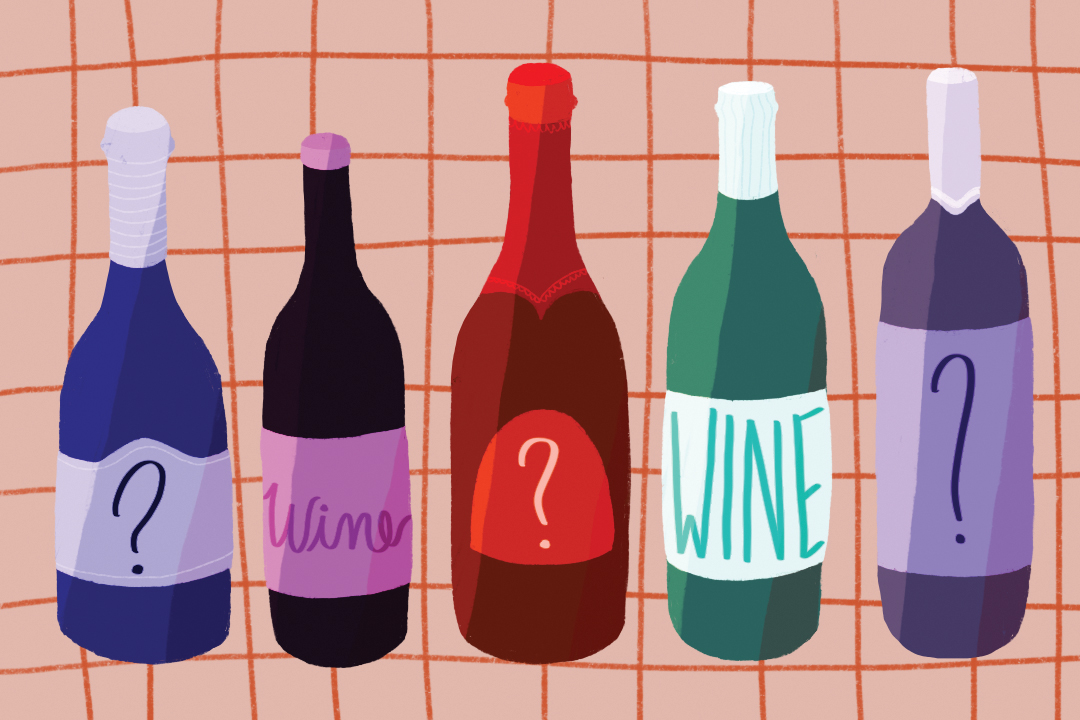Among the many wonders of wine is its sheer versatility. It can be as straightforward as a vessel for alcohol: a chilled bottle of the cheapest white wine on the shelf to placate nagging sobriety. On the other hand, wine can be as intricate and involved as researching which years in Tuscany saw the least rainfall — or if Mercury being in retrograde affected the grapes.
How you enjoy your wine is entirely up to you. But if you’re feeling bold, adventurous, and eager to expand your boozing repertoire beyond your reliable favourites, as President of the Rotman Wine Society, here’s a primer to get your foot in the door.
First, the Liquor Control Board of Ontario (LCBO) stores. When you enter, you see an intimidating sprawl of shelves, awash in bottles, bearing every label from every wine region in the world. For the uninitiated, deciphering these dizzying hieroglyphics can seem futile, relegating you to choosing which label looks the chicest — or worse, comparing their sugar content.
Moreover, it only adds insult to injury that the LCBO’s “Vintages” designation is a confusing misnomer. In the wine world, a vintage — or the year seen on the label — indicates when the grapes from that bottle were harvested. Conversely, a non-vintage wine is a blend of grapes from different vintages.
By contrast, the LCBO’s “Vintages” section is simply their own curation of wines that they deem befitting for distinction. Ironically, it even includes non-vintage wines such as Meiomi Pinot Noir from California. So don’t overlook wines outside this wood-panelled clique, as they hold some of the LCBO’s best-value gems.
Beyond the vintage or lack thereof, the next thing to look for on the wine label is whatever words are in the biggest, boldest font. This will generally convey what kind of wine it is.
Here’s a general rule of thumb: the wine world is divided into the ‘old world’ — which is Europe — and the ‘new world’ — which is every other wine-producing country today. Wines from the old world are usually named after the region in which they are made, while wines from the new world are named after the type of grape they are made from.
For instance, peruse the French section, and you’ll invariably come across bottles labelled Bordeaux: this is both the type of wine and its region. Bordeaux is predominantly a blend — also called a cuvée, to sound more pretentious — of grapes such as Cabernet Sauvignon and Merlot. In California, such a wine would instead just be labelled Cabernet Sauvignon or Merlot, based on the predominant grape — legally, the wine only needs to contain 75 per cent of the stated grape variety to be labelled as such. Winemakers will typically tinker with the blend and the ratios from year to year to achieve a desired flavour profile.
When judging the quality of a wine based merely on its label, a rule to follow is to look at how geographically specific the label gets. Wine regions branch into smaller appellations, which are sub-regions designated and protected for their wine production.
Take Bordeaux in Southwestern France, which is about twice Toronto’s size and home to more specific appellations like Saint-Émilion and Pauillac. Each region has unique winemaking rules, from how it does oak ageing to what grapes it permits in the blend. A budget Bordeaux might source grapes broadly from the region, but a higher-priced bottle might boast grapes solely from a Saint-Émilion vineyard. The narrower the grape sourcing, the more the wine embodies its origin. This doesn’t necessarily mean you’ll love the wine, but it helps explain why it may be pricier.
To the great disappointment of most wine novices, there is no single metric or marking on the label that can guarantee you’ll love the wine. Your palate is unique and evolving; a wine that enamours you in your early twenties could lose its lustre in your mid-twenties and become an undrinkable swill by your thirties. The only way to know if you’ll like a wine is to take the gamble and delve in.
But the unpredictability is part of the fun. As you drink your way through different regions, you’ll quickly learn you have a propensity for some over others — the Southern Rhône in France was my first penchant. You will begin to associate wines not by their brands or wineries, but by their regions; by their sense of place, encompassing their respective climate, altitude, soil, and geography. It is why wine lovers will obsess over a particular year’s rainfall in Tuscany like addled astrologists.
While campus party staples like seltzers or vodka sodas offer a predictable consistency, they lack the intrigue and dynamic nature of wine. How often have you heard someone ask with intrigue, “What kind of seltzer is that?” Wine, on the other hand, is ever evolving. From the moment you open the bottle, it begins to oxidize, subtly changing its character with every passing minute.
As you embark on your vinous journey, remember that the world of wine is vast, brimming with nuances waiting to be discovered. Every bottle you uncork allows you to travel through terrains and time, from verdant valleys to ancient vineyards.
But don’t let the jargon on wine labels deter you. The next time you’re at your local LCBO, be intrepid. Even if you don’t immediately fall in love with a wine halfway through the bottle, such distinctions between wine often blur into languid enjoyment. Wine is a lifelong journey of discovery that begins with a single bottle. Or two.



No comments to display.